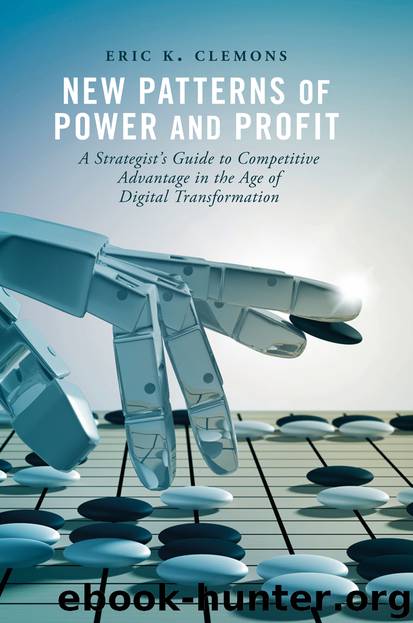New Patterns of Power and Profit by Eric K. Clemons

Author:Eric K. Clemons
Language: eng
Format: epub
ISBN: 9783030004439
Publisher: Springer International Publishing
Power of the largest issuers. As the banks with these rewards programs grew even larger, they became even larger and even more important to MasterCard and Visa .
Increased payments by sellers for their participation in the system. MasterCard and Visa charge much higher fees to participating merchants. These highest rates are not imposed on all cards, but are associated with the most popular rewards cards, like frequent flyer miles and cash back rewards cards.
The structure of the lower three levels of Fig. 7.3 is strikingly similar to Fig. 7.1, which showed the flow of profits through the CRS platforms . Merchants have become dependent upon MasterCard and Visa as parallel monopoly credit card systems, just as airlines became dependent upon Sabre and Apollo as parallel monopoly reservations systems. We would expect to see the same sort of reverse price war in credit cards that we saw in airline reservations systems.
Once again, we do see a Reverse Price War. MasterCard and Visa independently increased the maximum amount that their members could charge to merchants. As they increased the amount that banks charged merchants, they increased the amount that they transferred from merchants to their member banks. This in turn allowed banks to increase the attractiveness of the rewards programs they offered to their cardholders. Increasing rewards led to pressure to compete by offering still-more-attractive rewards, which led to a greater need for funds from merchants and a further increase in the discount rate. As issuing banks competed for customer business, the amount charged to merchants increased. This is another example of competition increasing prices. Competition among banks increased rather than decreased the price that merchants pay for access to the credit card payment system.
Moreover, in some instances, merchants pass higher selling costs through to consumers, just as they would pass through higher costs for rent or for utilities, or higher prices charged by their own suppliers. In essence, all consumers are now paying slightly higher prices, and consumers with reward program credit cards are getting small subsidies from merchants and all other customers.
This does not actually imply that there are no limits on the charges that banks can impose on merchants and service providers that accept their credit cards. There are three separate sources of limitation, the same three sources of limitation we saw previously in Sect. 7.5. Bankruptcy threshold —The bankruptcy threshold suggests that if the cost to merchants for accepting the cards gets too high, merchants and service providers will go bankrupt as a result. If too many merchants and service providers fail, this will limit the market available to credit card issuers, and to all Party-2 players in all Third Party Payer Systems.
Download
This site does not store any files on its server. We only index and link to content provided by other sites. Please contact the content providers to delete copyright contents if any and email us, we'll remove relevant links or contents immediately.
| Direct | Global |
| Industrial | Multilevel |
| Product Management | Research |
| Telemarketing | Web Marketing |
Influence: The Psychology of Persuasion by Robert B. Cialdini(4174)
The Miracle Morning by Hal Elrod(3903)
The Hacking of the American Mind by Robert H. Lustig(3576)
Pre-Suasion: A Revolutionary Way to Influence and Persuade by Robert Cialdini(3404)
Unlabel: Selling You Without Selling Out by Marc Ecko(2976)
Hidden Persuasion: 33 psychological influence techniques in advertising by Marc Andrews & Matthijs van Leeuwen & Rick van Baaren(2772)
Who Can You Trust? by Rachel Botsman(2729)
Kick Ass in College: Highest Rated "How to Study in College" Book | 77 Ninja Study Skills Tips and Career Strategies | Motivational for College Students: A Guerrilla Guide to College Success by Fox Gunnar(2717)
Purple Cow by Seth Godin(2695)
Ogilvy on Advertising by David Ogilvy(2678)
I Live in the Future & Here's How It Works by Nick Bilton(2521)
This Is Marketing by Seth Godin(2477)
The Marketing Plan Handbook: Develop Big-Picture Marketing Plans for Pennies on the Dollar by Robert W. Bly(2409)
The Power of Broke by Daymond John(2373)
Building a StoryBrand by Donald Miller(2358)
The 46 Rules of Genius: An Innovator's Guide to Creativity (Voices That Matter) by Marty Neumeier(2306)
Draw to Win: A Crash Course on How to Lead, Sell, and Innovate With Your Visual Mind by Dan Roam(2275)
The Tipping Point by Malcolm Gladwell(2202)
Market Wizards by Jack D. Schwager(2155)
